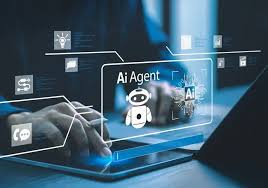From Hype to Reality: How Generative AI is Transforming Enterprise Workflows

Key Takeaways
- Generative AI is becoming an essential driver of productivity and innovation within enterprise operations.
- Thoughtful implementation of generative AI involves aligning business workflows and strategic integration.
- Data privacy, ethical use, and responsible governance are crucial for sustainable adoption.
- Studying real-world use cases and staying current with emerging research helps organizations succeed with generative AI initiatives.
- Keeping up-to-date with industry perspectives informs better enterprise strategies.
Why the Generative AI Buzz Is Here to Stay
Generative AI is moving from the experimental stage to a critical role in enterprise environments. Unlike previous automation solutions that mainly streamlined repetitive administrative tasks, generative AI tools revolutionize how organizations create, collaborate, and innovate. According to McKinsey’s research, 75% of large companies are already deploying or piloting generative AI to boost efficiency and stimulate novel business ideas.
Forward-thinking businesses embrace Enterprise generative AI to enhance everything from customer interactions to product development cycles, helping teams seize new opportunities and maximize ROI. This adoption rapidly becomes a defining digital transformation trend in the corporate world, especially as AI-driven solutions unlock time savings and new capabilities. Organizations can respond to market changes with greater agility by streamlining complex workflows. The technology also fosters innovation by enabling rapid prototyping and creative problem-solving at scale. As competition intensifies, those leveraging generative AI are better positioned to lead their industries into the future.
What Makes Generative AI Stand Out in Enterprise Settings?
Generative AI’s core strength lies in its ability to generate original content from vast datasets, providing real-time insights and creative outputs tailored to business needs. For enterprises, AI can create marketing materials, craft reports, build prototypes, and design personalized customer communications at scale. The transformative value comes not simply from automating work, but from amplifying the innovative capacity of employees and empowering teams to tackle higher-order challenges.
By offloading repetitive creation tasks and offering AI-powered suggestions, businesses see stronger problem-solving, faster project delivery, and more inspired collaboration. The cumulative effect allows companies to enhance customer offerings and stay ahead in a competitive marketplace.
Common Enterprise Use Cases for Generative AI
- Automated Report Generation: AI transforms data streams into comprehensive financial summaries, risk assessments, and business intelligence reports—reducing reliance on manual analysis.
- Customer Engagement: AI-driven chatbots and virtual agents can now carry on nuanced conversations, resolve customer queries instantly, and boost satisfaction around the clock.
- Software Development: Developers leverage AI to accelerate code reviews, assist with bug fixes, generate documentation, and even suggest new features, all with increased accuracy.
- Content Creation: Marketing and communications teams use AI to draft email campaigns, press releases, product descriptions, and presentations at a fraction of the previous production time.
- Research Acceleration: Research teams apply generative AI to synthesize findings, highlight trends, and recommend actionable next steps, expediting innovation cycles.
Best Practices for Integrating Generative AI Into Workflows
Achieving real value from generative AI hinges on strategic planning and robust implementation. Enterprises can maximize their success by following these practical steps:
- Assess Workflow Needs: Identify areas where generative AI can create a measurable impact without disrupting operations. Consider areas with high-volume, repetitive tasks or those that would benefit from fast content generation.
- Prioritize Data Quality: Well-curated, high-quality data is the foundation of effective generative AI. Establish regular data audits and validation processes to maintain accuracy and relevance in AI outputs.
- Embed Responsible AI Practices: Closely monitor AI outputs for bias, accuracy, and ethical compliance. Implement oversight mechanisms and encourage employee feedback to catch and correct issues early.
- Scale Gradually: Successful pilot programs should guide the rollout of generative AI enterprise-wide. Use gathered insights to refine workflows and gradually expand deployment with cross-functional coordination.
Overcoming Challenges: Governance, Data Security, and Change Management
Expanding the use of generative AI introduces new challenges around data privacy, compliance, IP protection, and workforce adaptation. Transparent governance, including creating clear access protocols and policies for ethical AI development, is essential. Comprehensive staff training is necessary to ensure that employees understand these tools’ potential and limitations.
Many enterprises are now establishing dedicated AI governance committees and investing in tools and protocols that prioritize security and compliance. Prominent technology analysts at Gartner emphasize that strong governance frameworks are crucial for scaling AI safely, ensuring organizations avoid potential legal and reputational pitfalls as they integrate new technologies.
How Generative AI Drives Real-World Innovation
Generative AI is already reshaping various industries. For example, global consulting leaders have cut proposal development time in half by tapping into AI-generated research and ready-made templates. The healthcare sector is also experiencing a paradigm shift. Clinicians leverage AI systems to summarize patient histories and recommend care pathways, allowing clinicians to focus more on patient outcomes and less on paperwork.
Leading manufacturers are integrating generative AI to monitor supply chains, more accurately forecast demand, and rapidly prototype new products. According to Harvard Business Review, these innovations drive measurable efficiency, agility, and customer satisfaction gains.
Trends and Insights for the Years Ahead
In the future, generative AI’s reach will extend deeper into strategic business areas. Forbes reports that advances in AI safety, hyper-personalized customer experiences, and integration with edge computing and IoT will continue to evolve rapidly in the coming years. Organizations that stay proactive with technology assessment and invest in upskilling employees will be best positioned to capitalize on these shifts.
Continuous learning, adaptability, and an openness to iterative experimentation will be the hallmarks of AI-driven enterprises as the technology landscape progresses.
Final Thoughts: Building AI-First Mindsets Across the Enterprise
Integrating generative AI into business operations is not to replace human talent, but to enhance it—giving teams the ability to tackle complex challenges more effectively, spark innovation, and create fresh customer value. When used strategically, AI becomes a powerful ally that amplifies human creativity and decision-making. Achieving this potential requires cultivating an AI-first mindset across the organization. This involves fostering cross-functional collaboration to break down silos, investing in ongoing education to keep skills relevant, and encouraging a culture that welcomes data-driven experimentation without fear of failure. These practices ensure employees feel empowered rather than threatened by the technology. By embedding these principles into daily operations, organizations can move beyond the initial hype of generative AI and achieve the tangible, long-term benefits of true business transformation.



